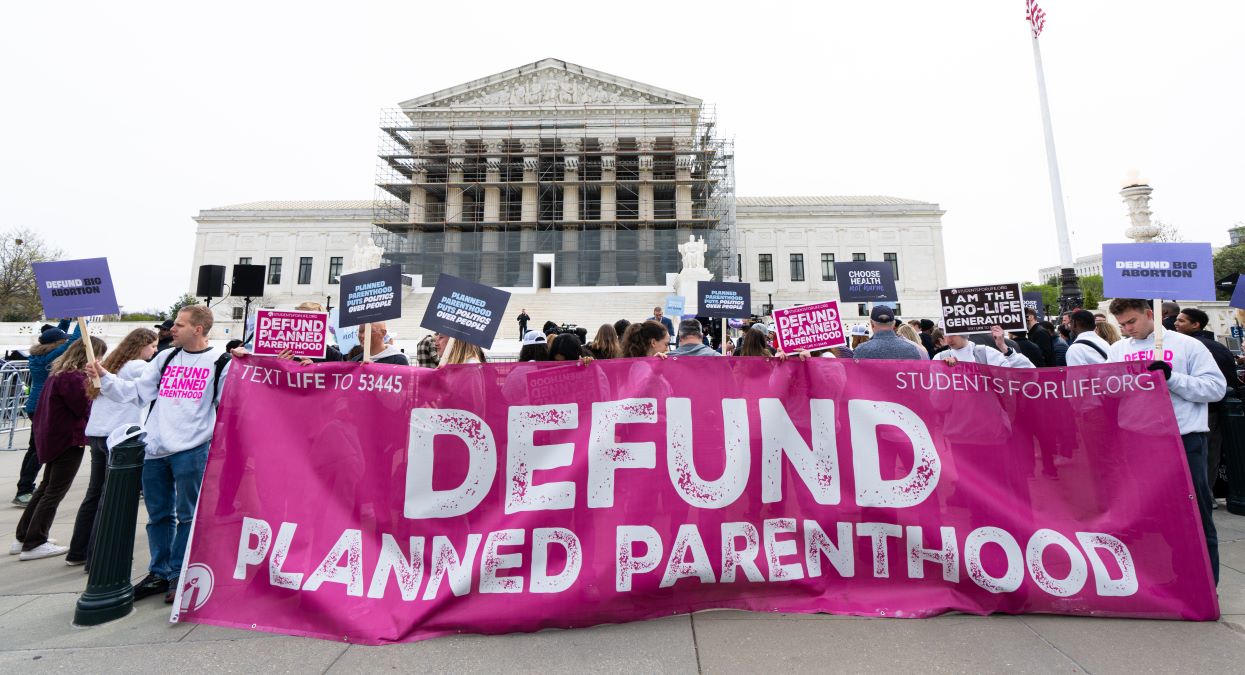Can States Nix Medicaid Dollars for Abortion Clinics? Supreme Court Justices Appear Divided
The U.S. Supreme Court heard oral arguments last week in Medina v. Planned Parenthood South Atlantic, a case with enormous consequences for federalism and the... Read More The post Can States Nix Medicaid Dollars for Abortion Clinics? Supreme Court Justices Appear Divided appeared first on The Daily Signal.

The U.S. Supreme Court heard oral arguments last week in Medina v. Planned Parenthood South Atlantic, a case with enormous consequences for federalism and the future of public funding for abortion.
The question before the justices: Does the Medicaid Act of 1965 give Medicaid recipients the right to sue states in federal court when those states exclude abortion providers from receiving state Medicaid dollars? A divided court peppered the parties’ lawyers with questions on whether the Act includes a vehicle to sue, and which words in text of the Act might indicate that.
Planned Parenthood challenges South Carolina
In 2018, South Carolina Gov. Henry McMaster issued an executive order barring abortion providers from the state’s Medicaid program. His administration argued that any taxpayer funding sent to abortion clinics, even for non-abortion services, inevitably subsidizes abortion and undermines the state’s interest in protecting unborn life.
Planned Parenthood South Atlantic, along with one of its patients, sued the state, invoking the Medicaid Act’s free-choice-of-provider provision, which says that Medicaid beneficiaries may seek care from “any qualified” and willing provider. South Carolina pushed back, arguing that it had the legal authority to determine which medical providers in the state could be deemed “qualified.” Because of its provision on abortions, the state had determined Planned Parenthood was not qualified and could therefore be restricted from receiving state Medicaid dollars.
The U.S. Court of Appeals for the Fourth Circuit ruled that Planned Parenthood and its client had a privately enforceable right to sue South Carolina under 42 U.S.C. § 1983—which allows individuals sue state officials and entities for violating their constitutional or federal statutory rights.
Now, the Justices must wrestle with whether Congress intended to let individual patients override state funding decisions and drag those states into court simply for refusing to fund abortion providers.
States have the discretion to determine who qualifies for Medicaid funds
Arguing for South Carolina was John Bursch of Alliance Defending Freedom, who emphasized that “clear rights-creating language is critical to creating private rights. Congress did not use clear rights-creating language in the ‘any qualified provider’ provision [of the Medicaid Act]…. it does not use the word ‘right’ or its functional equivalent.” If Congress wanted individuals to have the power to sue states over these kinds of decisions, it would have said so explicitly, he contended.
Instead, Bursch argued, states have long retained broad discretion in determining who qualifies to receive Medicaid funds in their states, and enforcement of Medicaid program rules is the responsibility of the federal government, not trial lawyers and activist groups.
Justice Clarence Thomas asked Bursch whether the word “right” is “absolutely necessary in order to determine whether or not a right has been created” under the “any qualified provider” provision.
Bursch answered that “if Congress wants to be clear, ‘right’ is the best word, but we would take its functional equivalent”–for example, “entitlement” or “privilege.”
Justice Sonia Sotomayor was clearly skeptical of Bursch’s argument, retorting that it “seems hard to understand that states didn’t understand that they had to give individuals the right to choose a provider.”
Justice Brett Kavanaugh, on the other hand, appeared sympathetic to Bursch’s argument, noting that the Supreme Court “has failed to give guidance … that lower courts can follow, that states, providers, and beneficiaries can follow.” He added that arguing about what words would create such rights, “rather than having something like ‘or its functional equivalent,’” would or could lead to “another decade of litigation.”
Bursch agreed, suggesting that the words “rights,” “entitlement,” “privileges,” and “immunities” would confer clear intent to create a private right of action, but that “[i]f you don’t limit it to those few words, then all of a sudden, the floodgates are open.”
Representing the United States, which filed an amicus “friend of the court” brief in support of South Carolina was Kyle Hawkins. Hawkins told the justices that prior cases have “emphasized that rights-creating statutes are atypical. But” the “any qualified provider” provision was “a run-of-the-mill spending clause statute, and holding otherwise would invite line-drawing problems.”
Planned Parenthood argues abortion providers are qualified regardless of a state’s concerns
For Planned Parenthood, Nicole Saharsky argued that patients should be able to sue when their choice of provider is denied, even if that provider’s exclusion stems from the clinic’s elective abortion services. Her case rests on the assumption that abortion providers are qualified simply by meeting basic medical standards, regardless of whether a state has serious moral and legal concerns about funding them.
Several justices pressed both sides. Justice Amy Coney Barrett asked about the practical consequences of forcing low-income patients to seek administrative remedies instead of suing in court, signaling not only concern about accessibility, but also skepticism toward expanding implied rights under federal statutes.
Justice Elena Kagan, meanwhile, seemed more receptive to Planned Parenthood’s argument, describing the case as one about choice and painting South Carolina’s policy as an arbitrary restriction. That framing, however, ignores the state’s legitimate interest in promoting a culture of life and preventing indirect subsidies for abortion.
Can pro-life states enact laws reflecting their citizens’ deeply held beliefs?
This case is not one involving simple Medicaid box-checking. Rather, it cuts to the core of whether pro-life states can enact and enforce laws that reflect their citizens’ deeply held beliefs without interference from activist organizations.
The question is not whether low-income Americans should have access to health care. They should, and they do. The real issue is whether Planned Parenthood is entitled to taxpayer dollars simply because it wants them.
South Carolina’s position has been consistent. Planned Parenthood could once again participate in the state’s Medicaid program if it ceased providing abortions. The organization has refused, revealing its true priorities. For the abortion giant, it is not about patient care, it is about protecting abortion, at all costs and with public dollars.
If the court rules in favor of Planned Parenthood, states across the country could be forced to continue funding abortion providers even when those providers violate state policies or offend the moral convictions of taxpayers. If the Court sides with South Carolina, states will be free to exercise their rightful authority to protect life, direct public funds in accordance with its laws, and prevent the abortion industry from using federal courtrooms as weapons against state sovereignty.
The court’s decision in Medina v. Planned Parenthood South Atlantic is expected by the end of June. For pro-life Americans, this case could be one of the most consequential in years. The outcome will help determine whether our constitutional structure, rooted in federalism and representative self-government, still matters in the face of relentless litigation from one of the most powerful and politically connected organizations in the country.
Medicaid was never meant to be a blank check for abortion providers, and state taxpayers should never be forced to fund organizations that end innocent human lives. With any luck, the Supreme Court will agree.
The post Can States Nix Medicaid Dollars for Abortion Clinics? Supreme Court Justices Appear Divided appeared first on The Daily Signal.










